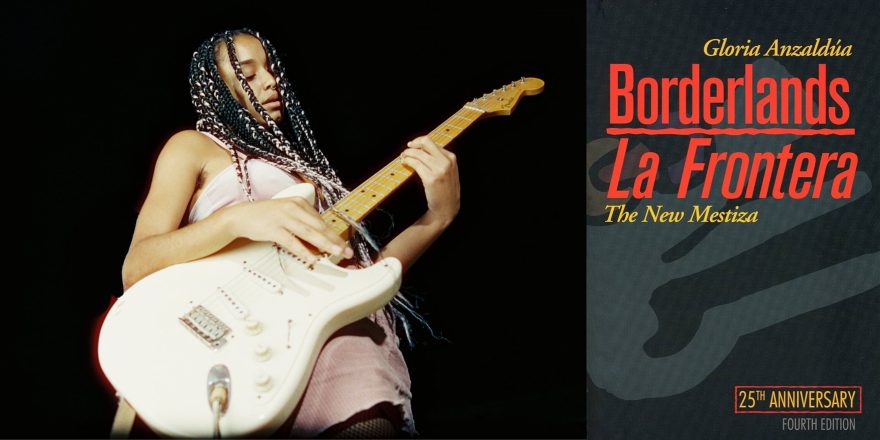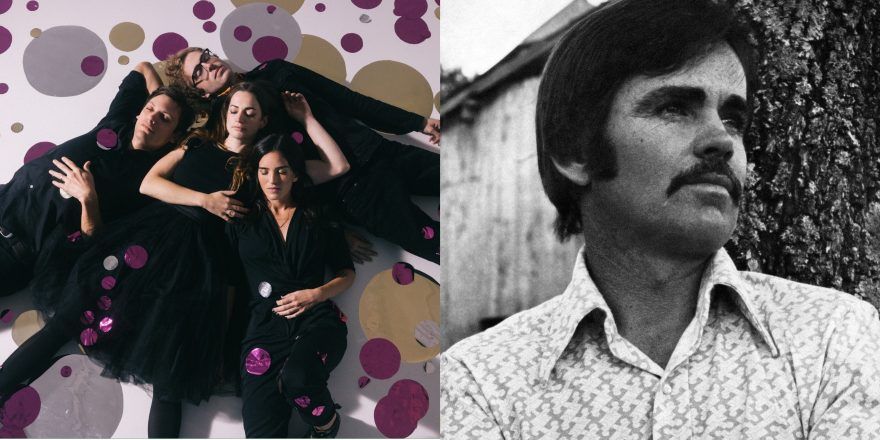…I passed between the two fangs, the flickering tongue. Having come through the mouth of the serpent, swallowed, I found myself suddenly in the dark…having crossed the portal, the raised hinged mouth, having entered the serpent’s belly, now there was no looking back, no going back. why do i cast no shadow? Are there lights from all sides shining on me? Ahead, ahead. Curled up inside the serpents coils, the damp breath of death on my face. I knew at that instant: something must change or I’d die.”
In the borderlands, Gloria Anzaldúa expands her identity through both physical and mental borders. Borderlands/La Frontera looks at Anzaldúa’s life in the borderlands — exploring her mestiza identity and transcending her experiences beyond labels, binaries, and borders. Anzaldúa describes the intrusive process of entering the serpent as a moment of transformation, of acceptance, of becoming and release. Her writing speaks of borders in all their forms, including the mental ones that confine and compartmentalize women* of color. As a Black woman* born in the settler-colonialist state of amerika, my identity has similarly been historically repressed. Growing up, I was instilled with certain ideas of how to be, how to present. Music and writing have always been my most authentic and raw form of expression and expansion. With shed, I’ve undertaken my own journey of “entering the serpent” in order to live authentically and fully embody my power.
“The Coatlicue state can be a way station or a way of life.”
Anzaldúa speaks of this Coatlicue state as a process of giving in and stepping into the unknown, embracing the contradictory. The Coatlicue state is the process of confronting discomfort in order to harness your personal power. In a world that compartmentalizes and confines identity based on racist, patriarchal, heteronormative borders and binaries, Anzaldúa asks us to step into discomfort, reject those borders, and find wholeness on our own terms. This understanding of self — one self-determined identity to empower instead of oppress — is something that I’ve held close in my own personal journey as well as in my music.
The cover of shed is representative of the unknown, the abyss, society’s contradictory impositions on feminine sexuality — this Coatlicue State. Though the cover art for shed is relatively simple, I think it directly embodies the deviant femininity of the Coatlicue state, or entering the serpent, which Anzaldúa describes as a “movement of sexuality, of creativity, the basis of all energy of life.” A “symbol of the dark sexual drive” or the “contradictory,” the cover of shed embodies this unbarring — the unknown, abyss-like place in consciousness that invites fluid existence. After coming out of a physically, mentally, and emotionally abusive relationship during the writing of this project, I found myself in my own Coatlicue state from which I’m only now finding true healing. At the time, I felt I sunk back into patterns and feelings of inferiority, like I wasn’t enough for myself, and lost parts of me. Although everything is fluid — including healing and self-acceptance — in exploring my shadows and my own serpent through music, I’ve been able to reconnect with myself and spirit.
“The destiny of humankind is to be devoured by the serpent.”
In “POISON,” the leading track on the EP, I feel “devoured by the serpent.” The venom of my repressed selves spreads through my veins, like I’m overtaken by my shame. I continue this slow drown into my own Coatlicue state with “MAKE IT UP” — letting the weight of a controlling and confining relationship overtake my life. As the project unfolds, latching on to the gritty, darker sounds that represent my shadows and my serpent, I find synthesis in myself, embracing my Coatlicue, embracing my shadow self. I think the true, fearless dive into the Coatlicue state, moving through the serpent, shows up clearest in “333.”
Anzaldúa speaks to how “institutionalized religion fears trafficking with the spirit world… It has strict taboos against this kind of inner knowledge. It fears what Jung calls the Shadow, the unsavory aspect of ourselves.” In both “333” and “Monki,” I embrace these Shadows, diving into all pieces of me: my queerness, my Blackness, and my non-binary identity. Throughout these songs, I reconcile a relationship with spirituality that had been distorted because of beliefs that were instilled upon me. It took me a long time to eventually process those opinions and relationships, and find comfort and pride in my own identity. Where “333” exists as a rediscovery of my queerness and my relationship with spirituality — moving through the Coatlicue State — “MONKI” acts as a rejection of the confinement of borders placed upon me in regard to my own spirituality. In “NVR RLLY,” I rebel against the silence and shame that I experienced in all of my relationships, I shed those parts of my past, give up and acquiesce to the unknown, to the rejected — and become more whole because of it.
The serpent has been a continuous cultural representation of the untrustworthy — Lilith, the Coatlicue. At the same time, the serpent exists as a symbol of femininity, specifically a deviant, sexually-healed, powerful femininity — which in a world governed by masculine fragility, is one of its most feared forms. Throughout Anzaldúa’s text, she urges the reader to succumb to the temptation, to “let the wound caused by the serpent be cured by the serpent.” In shed, I let the serpent sink its teeth in and transform my pain into power. I explore places that I’ve rejected, that I’ve made small, that I’ve silenced. Shame I’ve experienced in my queerness, in my Blackness, growing up surrounded by an idealized whiteness, and processing the trauma of an abusive relationship. Instead of hiding behind my shame and silencing myself for the comfort of others, I enter the serpent — and go through it. I shed the layers that I felt captive to with these songs. I am still entering my serpent — its fangs still spread its poison through my body. But as it seeps, invigorated by its venom, I choose authenticity. I submerge myself into the serpent in order to move through my shadows and find duality in the whole.
Anzaldúa’s influence speaks through my music in both scales and shed — uncovering myself and rejecting shame through sound, reconnecting with myself and spirit by rejecting the borders placed upon me. The pluralized identities that Anzaldúa explores throughout Borderlands empowered me to find peace in my own fluidness. As I enter my own serpent, I shed and transform. Through music, and especially with this EP, I acknowledge and accept the past selves that still look to wound. shed is the aural representation of “entering the serpent,” beginning with almost losing myself to my shadows in order to finally accept and find synthesis in all parts of me. 




